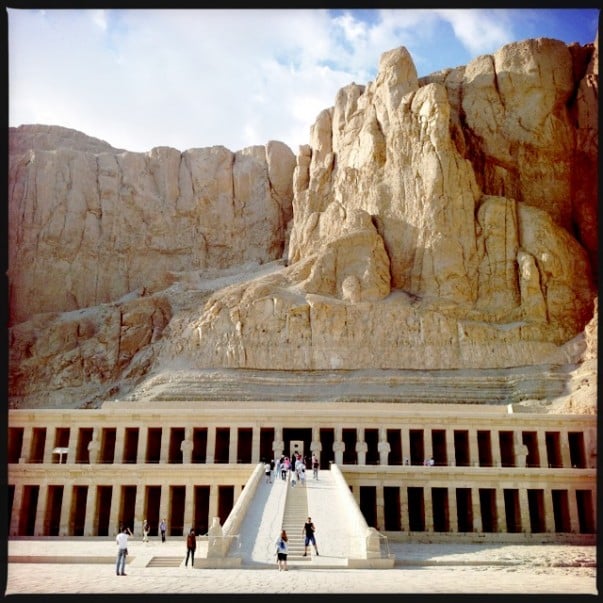The Mortuary Temple of Hatshepsut celebrates the life of a woman that Egyptologists hail as the first female pharoah.
Her temple, known as Djeser-Djeseru (Splendor of Splendors), sits at the heart of the Deir el-Bahri (Northern Monastery) complex of mortuary temples and tombs. Located along the west bank of the Nile, opposite the city of Luxor or Thebes in Greek, it presents a stark contrast to the rugged desert landscape surrounding it.
Temple of Hatshepsut History
Hatshepsut was the fifth Pharaoh of the 18th dynasty of Ancient Egypt and is believed to have ruled from 1503 to 1482 BC. She was the daughter of Pharaoh Tuthmosis I and married his successor Tuthmosis II, who died before she was able to give him a son. If what Egyptologists believe her life story to be, she is certainly a spunky lady because instead of merely stepping aside for the secondary wife who had actually given birth to an heir, Hatshepsut decided to rule alongside her stepson, Tuthmosis III. Soon after, she assumed absolute power.
The unique history and air of mystery surrounding Hatshepsut’s life makes a visit to her temple different from Egypt’s other ancient marvels. Within the temple, there are numerous faded reliefs that tell her fascinating story. To cement her status, Hatshepsut had herself portrayed with a pharaoh’s kilt and beard. After her death, Tuthmosis III became pharaoh. Perhaps out of fear of living up to his predecessor’s legacy, he ordered all images of Hatshepsut to be chiselled off thus erasing any remnants of her rule until they were rediscovered by modern archaeologists. Considering Tuthmosis III attempted to wipe out her existence, the temple is pretty well preserved too making it easy for visitors to imagine how it would have looked in the centuries gone by and allowing their thoughts to run wild trying to imagine the life of Egypt’s first female pharaoh.
Know all about extraordinary Places to visit in Egypt

